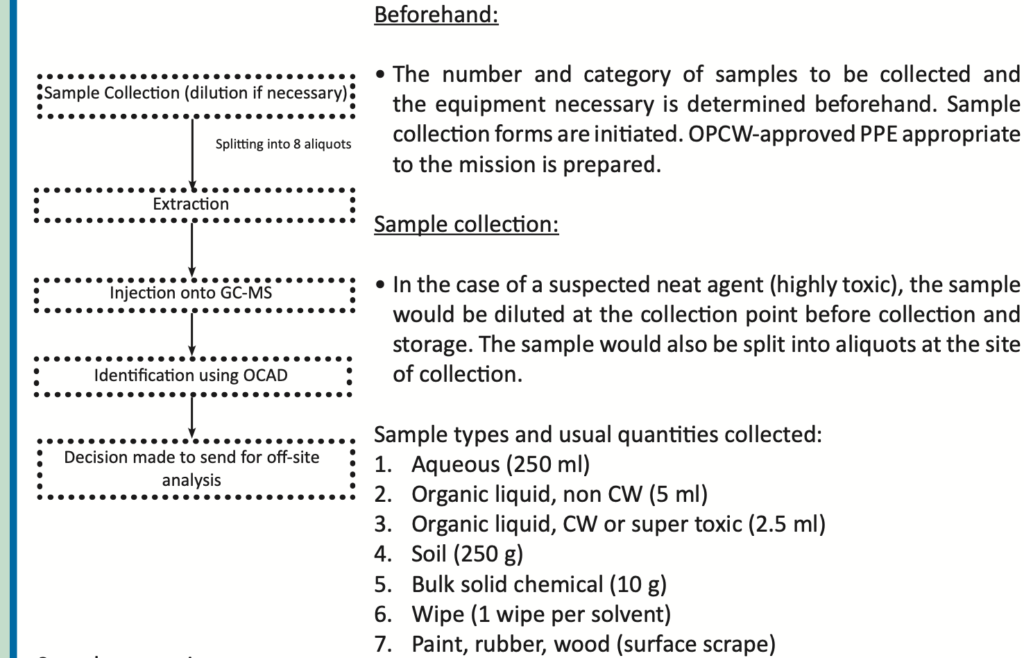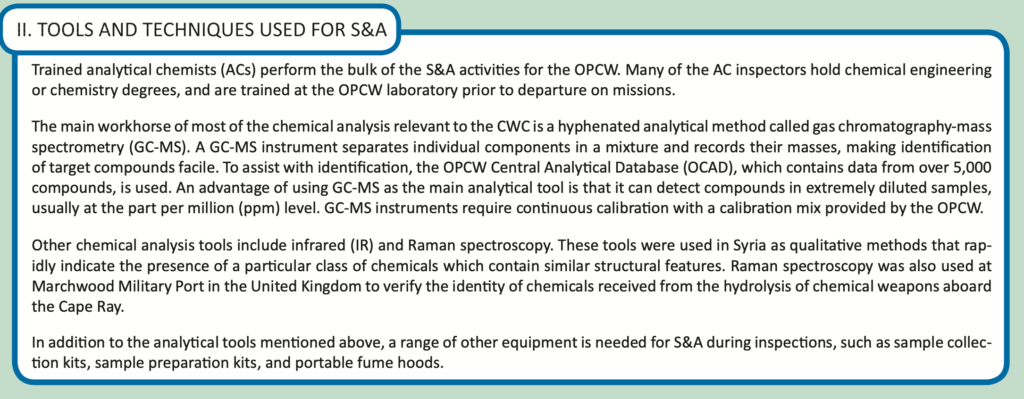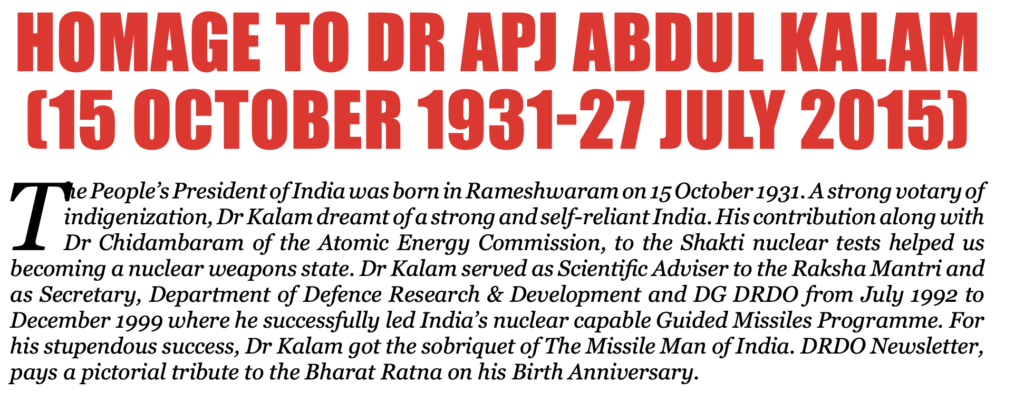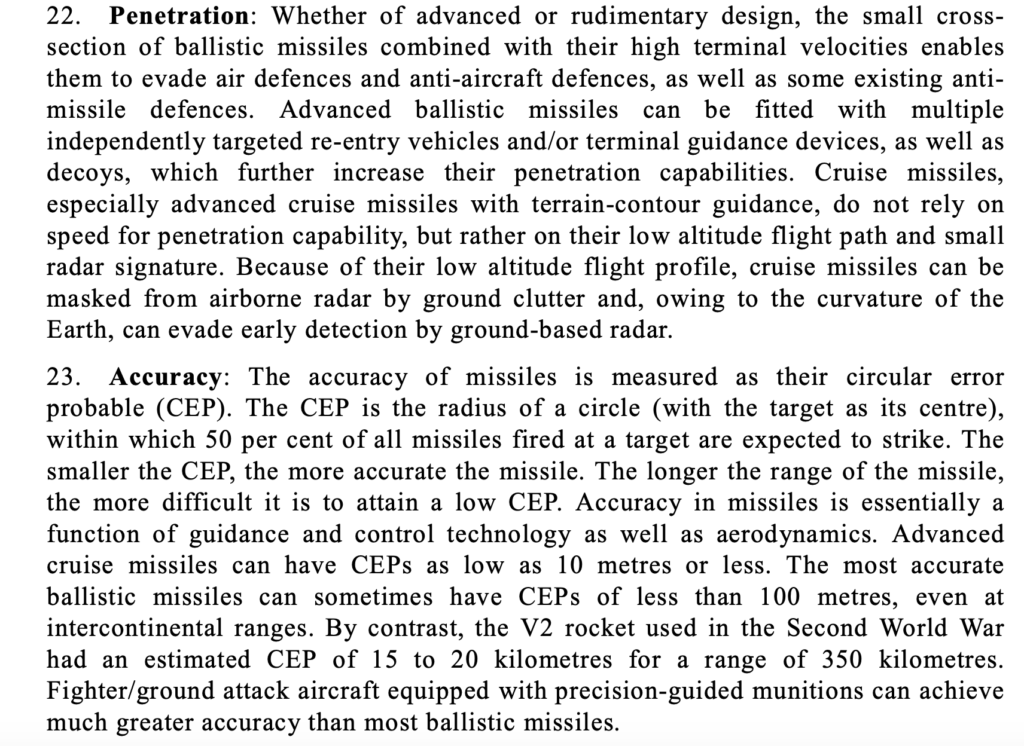Yesterday, I posted about a Bellingcat piece which contained information concerning OPCW sampling and analysis in Syria. Here’s a short OPCW document on the matter.



The folks at Bellingcat published a piece titled Unpublished OPCW Douma Correspondence Raises Doubts about Transparency of “OPCW Leaks” Promoters. I was struck by the portions describing the unpublished letter, some of which contains interesting material concerning the OPCW’s methodology for identifying the use of chlorine gas:
What Wikileaks did not release was a letter drafted by several members of the OPCW in June 2019 and then sent by the director general of the organisation, Fernando Arias, in reply to a letter from Whelan.
In Whelan’s letter he claimed there was no evidence of chlorine being used as a weapon in Douma, and traces of chlorine that were found were not consistent with the release of chlorine gas.
In a draft version of the unpublished reply seen by Bellingcat, Arias explains why Whelan’s assumptions are wrong – he simply wasn’t aware of the latest scientific techniques used by the OPCW because they were developed after he left the organisation. It was these techniques that allowed the OPCW to conclude chlorine chlorine gas had been released in the building in which the Syrian civilians died.
In his letter, which was drafted with the input of several OPCW scientists, Arias wrote: “Your letter further refers to 2,4,6-trichlorophenol as being used erroneously as an indicator of chlorine exposure, and you rightly point out that this chemical can be present for a variety of reasons that do not require chlorine gas exposure. However, there were additional chlorine-containing chemicals found in samples taken from Douma, and in particular, chlorinated pinene compounds that have been shown to form in certain types of wood that have been exposed to chlorine gas.
One of the Designated Laboratories that analysed samples after you completed your tenure has developed methods or analysing wood exposed to chlorine gas that can distinguish between different types of wood in the signatures of chlorinated compounds produced. This laboratory’s analysis of wood samples taken from Douma indicated that the wood indeed had been exposed to chlorine gas. Whether background samples were analysed or not has no bearing on this very clear evidence. All chlorinated compounds identified, combined with all other available data and information, support the conclusion of the report in regard to chlorine. Moreover, the findings from the analysis of samples conducted after the interim report was issued, do not contradict conclusions reached by either the interim or final reports.
“In summary, the environmental samples collected from Douma provided information consistent with an environmental release of a toxic chemical for use as a weapon. The inability to take samples from the victims or attend post-mortem procedures precludes drawing any conclusions on cause of injury and death to humans, and this was correctly and clearly specified in the report.”
The EU has established an online database “that will allow everyone to consult and analyse the data on Member States’ arms exports in a user-friendly manner.” The database, which is to be updated annually, “contains information on the value, destination and type of arms export licenses and actual exports from Member States, covering the years 2013-2019.”
This is some good background from the EU press release:
While decisions on issuing export licenses for military equipment are a clear national competence, the assessment criteria on which national authorities base their decisions are European. They are enshrined in the Common Position 2008/944 CFSP as the EU framework on arms export. The EEAS works together with Member States towards increased transparency and convergence in the implementation of that Common Position. It is essential to uphold European values when exporting arms: strict implementation by Member States of the Common Position on arms export is necessary.
Flying boxes through the air
Dropping cities everywhere
But water will still come
Man should surrender
Fire made for all to burn
Foolish end for all concerned
But water will still come
Man should surrender
Yesterday, I mentioned Dr. A.P. J. Abdul Kalam, the subject of this DRDO homage. Well, I thought that tonight would be as good a time as any to highlight an excerpt from an August 2008 speech from a Special Dialogue on Energy independence with the Malaysian Nuclear Agency:
Let me also share my second experience when I was the chief of Aeronautical Development Agency (ADA). It was 1998, India achieved a very important national milestone of becoming a nuclear weapon state. This accomplishment is yours. Many nations imposed technology denials and economic sanctions after the event. Particularly, the Light Combat Aircraft programme came to a halt because of collaborating countries breaking the agreements on the development contracts undertaken. I took an emergency meeting of the ADA Board and we formed a National Team for LCA control system with 20 members drawn from 7 organizations in the country with a two years project schedule. In 18 months, we realized a world class digital fly by wire control system for the LCA. Now, four LCA aircraft are flying and 5th one is getting ready for flight test. Cumulative flying hours logged by the 4 aircraft is over 500 hours. The batch production of LCA TEJAS is to commence.

DRDO’s October newsletter contains an homage to Dr. A.P.J. Abdul Kalam:

Anil Kakodkar mentioned Kalam in this 2018 interview:
Nuclear weaponisation has a security connotation. The country becomes stronger, there is a deterrence, and one can stabilise the security situation. But it is also an expression of technological capability of the country. And that, I think, significantly changes the way country is perceived, even economically. (APJ Abdul) Kalam used to say strength brings in respect.
It’s not especially new, but here are some warnings about nuclear war from Pakistani PM Imran Khan in his 9/25 speech to the UNGA:
In order to divert attention from its illegal actions and atrocities in Indian Occupied Jammu and Kashmir, India is playing a dangerous game of upping the military ante against Pakistan in a nuclearized environment.
and
There will be no durable peace and stability in South Asia until the Jammu and Kashmir dispute is resolved on the basis of international legitimacy. Kashmir has been rightly described as a “nuclear flash point”.
Parenthetically, I don’t think I’ve before seen world leader quote Noam Chomsky:
According to respected Professor Noam Chomsky, mankind is at even a greater risk than it was before the 1st and 2nd World Wars in the last century, and this is because of the increased threat of nuclear war, Climate Change, and sadly the rise of authoritarian regimes.
China’s statement to the First Committee has a useful summary of Beijing’s nuclear weapons policies:
China has pursued a nuclear strategy of self-defense, always kept its nuclear capabilities at the minimum level required for its national security, and has never and will never take part in any nuclear arms race with any other country. Given the huge gap between the nuclear arsenals of China and those of the US and the Russian Federation, it is unfair, unreasonable and infeasible to expect China to join in any trilateral arms control negotiation. China will never participate in such a negotiation and will never accept any coercion or blackmail.
China’s rejection of the so-called “trilateral arms control negotiation” does not mean that China evades its own responsibility for nuclear disarmament or refuses to participate in the global nuclear disarmament process. Ever since the first day of possessing nuclear weapons, China has been advocating the complete prohibition and thorough destruction of nuclear weapons. China has declared the policy of no-first-use of nuclear weapons at any time and under any circumstances, and unconditionally commits itself not to use or threaten to use nuclear weapons against Non-Nuclear-Weapon States or Nuclear-Weapon-Free Zones. China is the only P5 country who makes such commitments. China firmly abides by its commitments on the moratorium of nuclear tests, and supports the development of the verification mechanism of the Comprehensive Nuclear-Test-Ban Treaty (CTBT). China supports negotiation for a treaty banning the production of fissile material for nuclear weapons or other nuclear explosive devices on the basis of a comprehensive and balanced program of work in accordance with the mandate contained in the Shannon Report, and supports the work of the UN Group of Governmental Experts on Nuclear Disarmament Verification. China is ready to engage in meaningful dialogue on the issues related to strategic stability with all parties on the basis of mutual respect, and will continue its participation in the arms control process under the framework of the United Nations, the Conference on Disarmament and the P5.
The statement also contained some policy recommendations:
In the face of the increasingly complex and ominous international security landscape, the P5 should take proactive measures to manage differences, and work together to maintain global strategic stability. Since the Beijing Conference in January last year, the P5 have reached consensus on carrying out cooperation on strategic security issues including nuclear doctrines and policies, nuclear risk reduction, etc. China suggests that the P5 continue to strengthen dialogue on nuclear policies and doctrines, jointly reiterate that “A nuclear war cannot be won and must never be fought”, make a commitment not to target their nuclear weapons at any State, commit to the no-first-use of nuclear weapons unconditionally, and conclude legally binding international instruments on providing negative and positive security assurances to non-nuclear weapon States. We urge the US to abandon the policies of nuclear umbrella and nuclear sharing, withdraw all the nuclear weapons deployed overseas, stop the development and deployment of its global missile defense system, and play a due role in improving international and regional security environment.
It’s old, but the 2002 UNSG report titled, The Issue of Missiles in All Its Aspects, is a decent primer on missiles. In addition to the history and background, there’s a concise explanation of what missiles are and how they work:





Here’s an excerpt from Pakistan’s statement to the First Committee:
India’s so-called “No first-use” policy lacks credence. Its Defence Minister himself cast doubt on this, when he held out the threat of pre- emptive nuclear attack last year. India has operationalized its “cold start” doctrine of a surprise attack against Pakistan, deploying several “strike force” brigades close to the border; outlined plans for a naval blockade, and proclaimed the intention of fighting a “limited war” with Pakistan under the “nuclear overhang”.
Also,
However, Pakistan cannot remain oblivious to the disturbing security dynamics in our region. Pakistan will take all necessary measures to ensure its security and to maintain full spectrum deterrence.
Peace and stability in South Asia can only be achieved through:
• the resolution of disputes between Pakistan and India, particularly the core issue of Jammu and Kashmir;
• the maintenance of a balance between conventional forces; and
• reciprocal measures for nuclear and missile restraint.
Pakistan’s proposal for a strategic restraint regime in South Asia, based on these inter-locking elements, remains on the table.
The statement also discusses other arms control issues, nuclear disarmament, and nonproliferation. Unsurprisingly, there’s a good deal of material about Pakistan’s relationship with India.